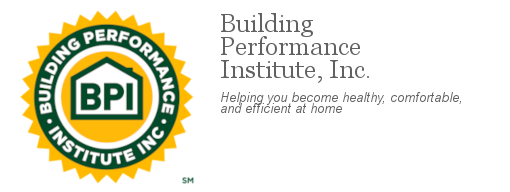
Water. To most of us, it’s an essential commodity that seems plentiful, even unlimited – you simply turn on the faucet and out flows a limitless supply of fresh, clean, clear and potable water. Use as much of it as you like for drinking, cooking, bathing, gardening or anything your heart desires. Oh, the marvels of modern life!
But water is not as unlimited as many people think. For proof of this, we don’t have to look any further than the ongoing drought in California. Other locations around the country (e.g., Flint, Michigan) have had their own crises caused by poor maintenance of municipal water systems or lack of clean water. Even in locations where there is no pressing lack of fresh water, reducing water usage is an important goal because it saves money and protects the environment (increased water efficiency reduces the environmental impact of water intake, transportation, treatment and discharge).
If you're looking for ways to reduce the amount of water your home uses, start with implementing these six simple strategies:
1. Install low-flow bathroom fixtures
According to the USGS water science school, the average American uses about 80 to 100 gallons of water per day! Toilets and showers are the two biggest sources of consumption. I was shocked on a recent trip to Portland, Oregon to see so many toilets and plumbing fixtures well above the standards for water usage required in our Southern California region. Installing low-flow toilets, faucets and showerheads in your bathroom can dramatically reduce the amount of water you use each day. To be considered low-flush, a toilet should use less than 1.6 gallons of water per flush (also referred to as GPF; 2-4 GPF used to be typical!). A shower head should have a flow rate under 2.5 gallons per minute.
2. Reduce irrigation
According to the U.S. EPA, Americans use about 9 billion gallons of water every day for watering their lawns and gardens. Much of this water is wasted due to inefficient irrigation tactics. If possible, avoid irrigating your lawn completely. Instead, plant drought resistant grass and don't worry if your yard isn't quite as green and lush as your neighbors. Some cities provide discounts or incentives to replace your lawn with drought resistant landscaping). If you really need to water your lawn, though, you can follow these tips to improve efficiency:
- Water in the early morning to reduce loss from midday evaporation while preventing mildew and rot to grass from night-time watering
- Use soaker hoses or other methods which apply water directly to the ground instead of spraying through the air (to reduce loss from evaporation)
- Adjust your irrigation system to only water the exact areas that need it
3. Collect water from your roof
(Note: Be sure to check local regulations before implementing this tactic, as some locations restrict the collection of rain water.) Where allowed, water from your roof can be funneled into holding containers, which can be used for irrigation and other non-potable uses. This is very easy to set up if your roof already has gutters and downspouts. Be sure the holding container is secured and/or treated to avoid mosquito growth.
4. Drive to the car wash
Believe it or not, washing your car at home uses far more water than taking it to a self-serve carwash facility. The high pressure hoses at the car wash facility are able to effectively clean a vehicle with less water. (Not to mention the fact that washing your car at home dumps polluted water into the storm drains which were intended for rainwater.) The typical garden hose uses up to 10 gallons of water per minute, meaning that a 10-minute home carwash could use 100 gallons of water. By comparison, a self-serve carwash typically uses about 11 gallons.
5. Install a shower timer
If the temptation is just too great to luxuriate in a long, hot shower, then a shower timer may be the solution for your home. It's a device you can install on your shower to monitor how much water is being used. It alerts you if the shower is taking too long, and then automatically shuts the water off.
6. Get a dishwasher
Having a dishwasher is a wonderful luxury that can save you lots of time cleaning up dishes, but did you know that it’s also good for the environment? If your home doesn't have a dishwasher and you're wondering if you can justify the expense, you'll be pleased to know that automatic dishwashers typically use less water than hand washing dishes. According to ENERGY STAR, a dishwasher can save 5,000 gallons of water and 230 hours of time every year!
While you may not be able to implement all 6, even adding one of the above to your routine could save many gallons of water in your household every year and contribute to the water savings of your whole community.
Edward Flanagan is the founder of Edward’s Enterprises, a licensed general contractor that has been improving homes and providing retail maintenance in Southern California since 1996. Their services include water-saving faucet, toilet, shower and flushometer installs and irrigation system repairs. Edward currently divides his time between Camarillo and Venice Beach, CA, and loves the 405.

Follow us